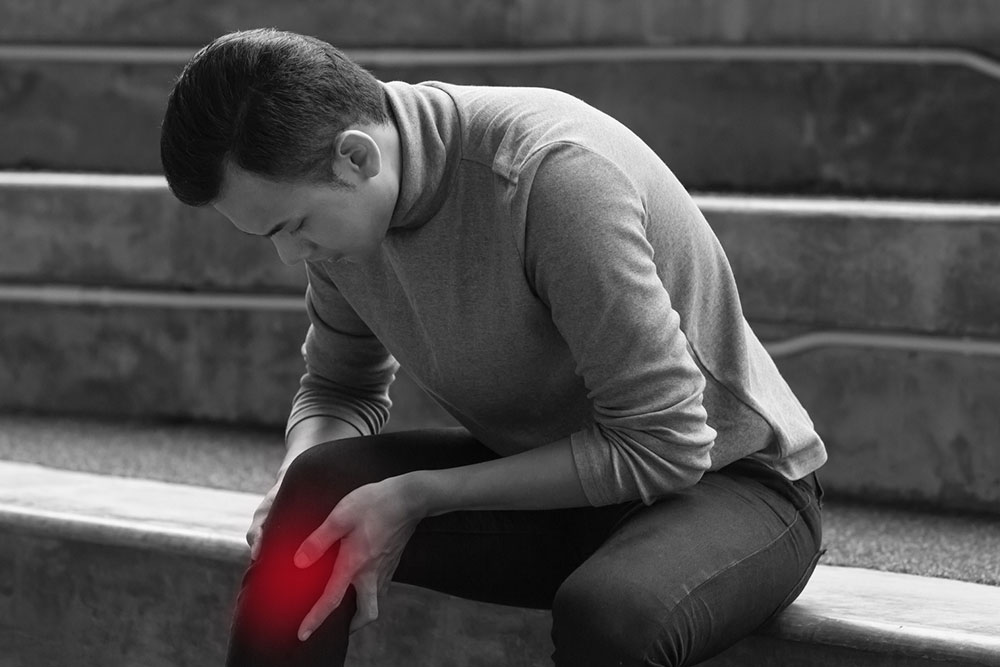Joint Pain – Causes and Treatment Options
The human joints can be considered as engineering marvels that bear an enormous amount of stress. They are body parts that not only connect your bones but also support and carry the weight of your body and facilitate easy movement. Prolonged daily functions can impose a huge strain on them. As a result, they suffer wear and tear, injuries, and damage, causing symptoms like pain, and reduced mobility and flexibility.
Statistics show that there are at least 30 million adults in the country who currently live with joint pain. It can be a debilitating condition that prevents you from carrying on daily activities, engaging in sports, entertainment, and recreation.

Based on the underlying cause, severity, and available resources, there are a variety of treatment options that can help provide quick joint pain relief. They include medications, injections, dietary supplements or changes, alternative therapy, massage, yoga, chiropractic options, surgery, lifestyle changes, and exercise.
Causes of joint pain
Some of the common causes of joint pain include the following:
- Inflammation
- Diseases or infections like arthritis and chikungunya
- Aging and natural wear and tear
- Accidents and injuries
- Impact and trauma
- Nerve damage
- Poor posture
- Over-use of certain parts of the body
- Lack of exercise; sedentary job and lifestyle
- Being overweight
- Certain autoimmune disorders
- Breakdown of cartilage in the knee joints
- Hypothyroidism
- Rheumatic fever
- Dislocation, sprains, and strains
- Bursitis
There are some medicinal and natural remedies one can resort to when looking to get quick relief from joint pain.
Natural or home-based remedies
- Epsom salt baths, hot and cold packs, and application of certain essential oils like peppermint or eucalyptus oil can help one get quick relief from joint pain.
- Hydrotherapy is a great option for getting quick relief from joint pain. Soaking in a warm bath and massaging the painful joints can help stimulate blood circulation.
- Massage therapy should be done by a professionally trained masseur. However, gentle massage can be done by yourself, ensuring that the direction of strokes is always towards the heart. You can apply essential oils or use topical pain relievers like menthol.
Pain medications
- Over-the-counter medications like aspirin, acetaminophen, and non-steroidal anti-inflammatory drugs (NSAIDs) such as ibuprofen help provide quick joint pain relief. However, their long-term use is not recommended. Moreover, if the pain lasts for longer than a stipulated period, then the underlying cause of the pain has to be investigated and diagnosed
- Prescription medications like corticosteroids, opioids, antidepressants, anticonvulsants, and lidocaine patches also help offer instant relief
- Patient-controlled analgesia is used in hospitals to help patients control the amount of pain relief medications they receive based on their own profile.
Topical analgesics
Creams, gels, oils, ointments, sprays, and patches can be used to achieve quick joint pain relief. These include medications such as diclofenac and salicylate. They provide quick joint pain relief in the short term for moderate level pains. Since they’re applied locally, they’re a safer option for those with other complicated health conditions and seniors.
Lifestyle changes
- If the individual suffers from obesity, losing a few pounds can certainly take the pressure off the joints and help provide effective pain relief.
- Smoking, sedentary jobs, lack of exercise, and lack of sleep can be addressed by making conscious efforts to alter these and make efforts to maintain your health.
- If you work in jobs that involve repetitive strain to joints in the hands, neck, fingers, and legs, you may need to take short breaks at work to prevent injuries and damage to the joints
Alternative therapies
For quick joint pain relief, alternative therapies like acupuncture, yoga, meditation, Tai Chi, and Ayurvedic treatments also help provide pain relief if undertaken consistently and under the guidance of a trained professional.
Rest and immobilization of the joints
- The best therapy is to take complete rest and relax. This gives both the mind and body enough time to recuperate, repair, and restore health to areas of damage.
- The joints can also be immobilized with the help of a splint or brace. This is effective in the case of neck and knee joint pains, fractures, and sports-related injuries.
Injections
- Sports medicine specialists recommend specialized injections for quick joint pain relief. Corticosteroid injections that are used to provide relief from osteoarthritis-related joint pain and hyaluronic injections used in the case of arthritis or knee joint damage are some common examples.
- Hyaluronic acid resembles the synovial fluid that lubricates the joints. Hence, it can help provide a shock-absorber gel that prevents the joints from rubbing together.
- Platelet-rich plasma injections are another option. They use the person’s own blood and promote self-healing. However, they can be very expensive and they’re not usually covered by insurers.
- Placental tissue matrix injections are a cutting-edge treatment option for providing quick joint pain relief. However, these are extremely expensive and they’re not even covered by major insurance policies.

